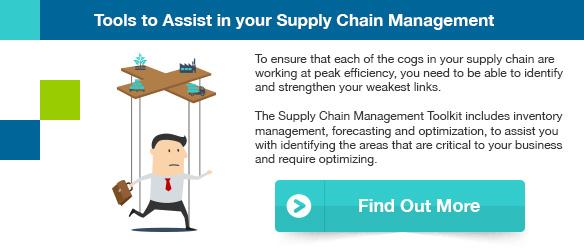In recent years, manufacturers across the globe have felt the painful pinch of contracting economies. This trend looks set to continue in 2016 and on into 2017 with expectations of further downward pressure casting a pallor on the future of the sector.
But all is not lost. As a result of currency weaknesses and economic challenges, manufacturers have been forced to identify the factors that increase productivity and provide a significant competitive advantage.
This leads to the obvious question: where are the areas of major productivity improvement? One immediate answer is through supply chain automation.
A large number of manufacturing execs are taking steps towards increasing productivity through supply chain automation. Supply chain automation can accelerate the rate at which products and services move from suppliers to customers, while reducing costs and growing the bottom line.
There are several compelling drivers for COOs to implement supply chain automation. These include:
Decreasing operating costs
Supply chain automation helps reduce labour costs. It can also reduce inventory, warehousing, and overhead costs associated with inventory storage, including rent, labour and energy costs.
Increasing productivity
By optimizing current resources, including enabling the ability to work around the clock, companies can gain up to 20 percent more productivity in areas that have been automated.
Improving accuracy
Automation can reduce errors associated with manual processes, as well as help plan cost control by providing accurate, real-time information on inventory levels.
Increasing volume
In a manufacturing scenario, automation can increase the volume of product that can be produced. Automation will incorporate the skills of trained workers with the accuracy of automated equipment thereby increasing productivity.
Improving workplace safety
With a reduction in labour-intensive work, automated equipment has the added benefit of reducing worker injuries.
Integrating with large suppliers
The ability to integrate systems with that of large suppliers is a huge advantage of automation, and a strong foundation upon which to partner with conglomerates.
Improving time savings
By streamlining business processes, supply chain automation boosts time savings by reducing the time associated with implementing labour-intensive tasks like accounting. This reduction in manual processes can save manufacturers vast amounts of time and money.
Improving compliance
Depending on the industry, automation can greatly help your organization’s ability to comply with industry standards. Compliance can be maintained via automation by standardizing pricing, products and vendors.
Decreasing operating costs
Supply chain automation helps reduce labour costs. It can also reduce inventory, warehouse, and overhead costs associated with inventory storage, including rent, labour, and energy costs.
Reducing environmental footprint
Automation can impact the environment in a positive way, especially if your organization’s objective is to go paperless. By eliminating the paper and energy necessary to print documents, automation can help reduce a manufacturer’s carbon footprint.
Enterprise Resource Planning (ERP) is key to an automation project. ERP software automates and integrates core business processes such as customer orders, scheduling operations, inventory records and financial data. ERP software can drive huge improvements in the effectiveness of any organization, including manufacturing, distribution, finance and reporting and analysis.
In my next blog I will take a look at how to efficiently automate your supply chain.








